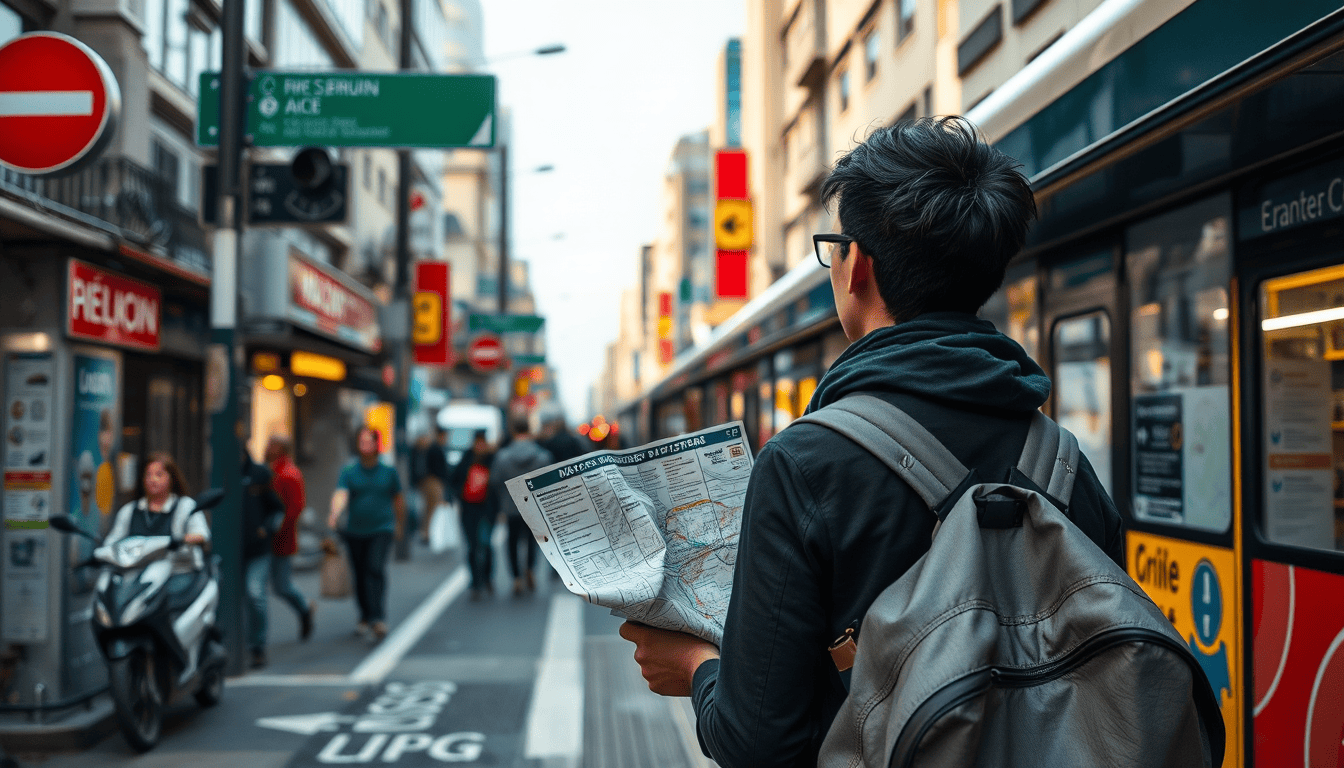
Traveling to a new country can be an exhilarating experience, filled with the promise of adventure, new sights, and cultural immersion. One of the best ways to explore a new destination is by using public transportation. It’s often cost-effective, provides a glimpse into daily life, and allows you to meet locals. However, navigating an unfamiliar public transport system can be daunting. Here are some detailed tips to help you make the most of your experience using public transportation in a new country.
1. Research the Public Transportation System
Before you arrive, take some time to research the public transportation system of your destination. Look for:
Types of Transportation: Understand the various modes of transport available—buses, trains, trams, subways, or ferries. Each system may have different rules and operational hours.
Routes and Maps: Download route maps and familiarize yourself with major lines and stops. Many cities have mobile apps that provide real-time information on routes and schedules.
Fare Structure: Investigate how fares work. Are they flat-rate, distance-based, or do they require special passes? Knowing the cost can help you budget and avoid surprises.
2. Download Useful Apps
Having the right technology at your fingertips can enhance your public transportation experience. Consider downloading:
Navigation Apps: Google Maps, Citymapper, or local transit apps can help you plan routes and provide directions.
Language Translation Apps: If the local language differs significantly from your own, a translation app can be handy for reading signs or asking for help.
Ticketing Apps: Some cities allow you to purchase tickets or passes through their apps, which can save you time and hassle at ticket machines.
3. Learn Basic Local Vocabulary
Knowing a few key phrases in the local language can go a long way in easing your travel experience. Focus on learning:
Common Terms: Words like “ticket,” “train,” “bus,” “stop,” and “help” can be incredibly useful.
Numbers: Being able to understand numbers will help you navigate ticket prices and bus/train numbers.
Polite Phrases: Simple greetings and thank-yous can endear you to locals and make them more willing to assist you.
4. Stay Aware of Your Surroundings
When using public transportation, especially in crowded areas, it’s essential to stay vigilant:
Watch Your Belongings: Keep your bag close and be mindful of pickpockets, especially in tourist-heavy areas.
Be Aware of Local Customs: Every culture has its own set of social norms. For example, some places may have rules about eating or drinking on public transport.
Follow the Flow: Observe how locals behave. This can help you understand unwritten rules, such as giving up seats for the elderly or pregnant women.
5. Plan Your Routes Wisely
When planning your journey:
Avoid Rush Hours: If possible, travel during off-peak hours to avoid crowded trains or buses.
Know Your Stops: Familiarize yourself with the names of your departure and arrival stops, as well as any transfer points.
Allow Extra Time: Public transport can be unpredictable. Allow yourself extra time to reach your destination, especially if you have timed activities.
6. Purchase Tickets Wisely
When it comes to buying tickets:
Know Where to Buy: Tickets can usually be purchased at kiosks, machines, or onboard. Familiarize yourself with the options to avoid delays.
Check for Passes: Many cities offer day passes or multi-ride tickets that can save you money if you plan to travel frequently.
Validate Your Ticket: In some systems, you need to validate your ticket before boarding. Be sure to look for validation machines to avoid fines.
7. Be Respectful and Courteous
Public transport is a shared space. Maintain good manners by:
Offering Your Seat: If you see someone who may need it more than you (elderly, disabled, or pregnant individuals), offer your seat.
Keeping Noise Levels Down: Be mindful of your volume, whether you're on a phone call or listening to music.
Following the Rules: Adhere to local guidelines, whether it's for food consumption, standing in lines, or wearing masks if required.
8. Ask for Help When Needed
Don’t hesitate to ask for assistance if you’re unsure about something:
Seek Out Transit Staff: Many stations have personnel who can help with directions or provide information about routes.
Use Your Smartphone: If you're having difficulty communicating, showing a destination on your phone can help bridge the language gap.
Engage with Locals: People are often willing to help travelers. A friendly demeanor can lead to helpful interactions.
9. Experience the Local Culture
Using public transport can be a cultural experience in itself:
Observe Local Life: Public transport is a great way to see how locals live. Pay attention to their interactions, routines, and daily life.
Try Local Snacks: If the culture permits, don’t shy away from trying local snacks sold at stations or nearby shops.
Capture the Moment: Take photos (when appropriate) to remember your journey. Just be respectful of others' privacy.
10. Stay Flexible and Patient
Lastly, the most important tip is to remain flexible and patient:
Expect Delays: Whether due to traffic, technical issues, or other reasons, transportation can be unpredictable.
Adapt to Changes: Sometimes, plans change. Being open to alternative routes or methods of transportation can lead to unexpected adventures.
Embrace the Experience: Every misstep can turn into a memorable story. Enjoy the journey, and keep a sense of humor!
By following these tips, you'll be well-equipped to navigate public transportation in a new country with confidence. Embrace the experience, immerse yourself in the culture, and enjoy the journey as much as the destination. Happy travels!




